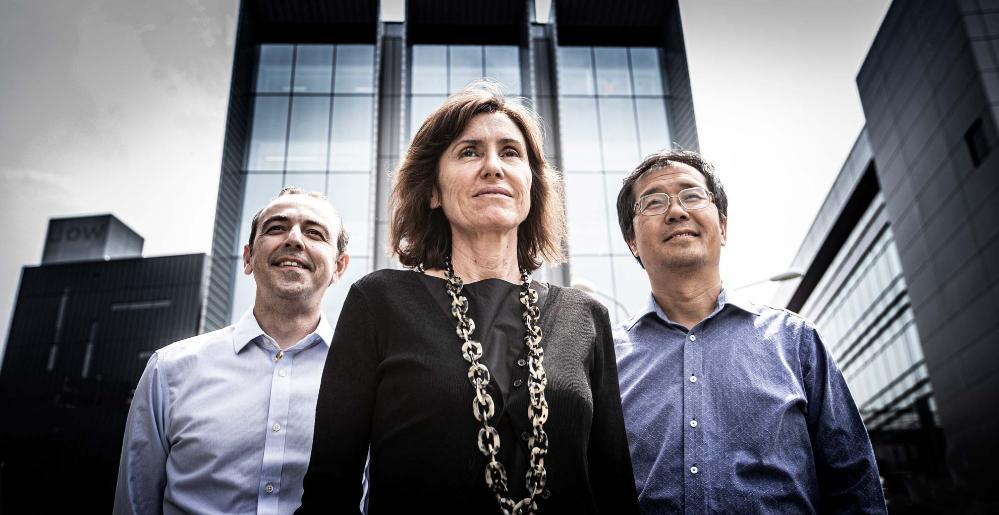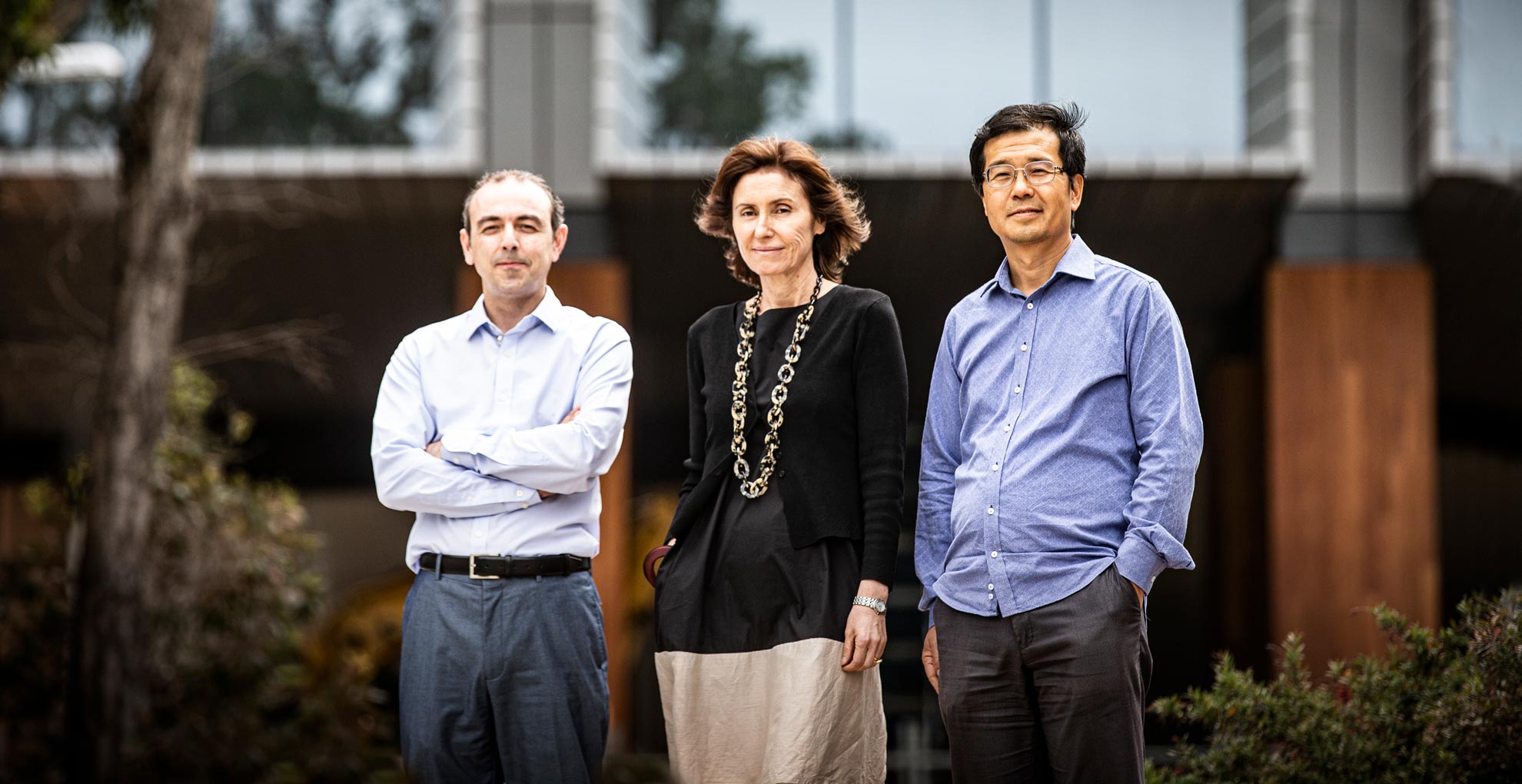December 9, 2019
UOW researchers awarded $3.3M in health and medical grants
Four projects funded under new scheme to support innovative research
University of Wollongong (UOW) researchers have been awarded $3,321,667 in grants from the Federal Government under a funding scheme to support innovative research projects.
Four UOW-led projects were awarded funding through the newly established National Health and Medical Research Council (NHMRC) Ideas Grant scheme.
The Federal Minister for Health, the Hon Greg Hunt MP, announced the funding on Saturday (7 December).
The successful UOW projects will look at:
- the potential health risks of mobile phone radiofrequency electromagnetic energy on brain development and behaviour in children and adolescents;
- understanding why some skin cancer tumours spread to lymph nodes, becoming life threatening, while others don’t, in order to predict which patients are most at risk;
- determining the 3D molecular structures of herpes virus proteins in order to develop new anti-viral drugs;
- the ethical, legal and social implications of adopting Artificial Intelligence (AI) for diagnosis and screening of conditions including breast cancer and cardiovascular disease.
UOW Deputy Vice-Chancellor (Research and Innovation) Professor Jennifer Martin AC welcomed the new funding scheme and congratulated the successful researchers.
“I am delighted by the 2020 NHMRC Ideas announcement. This new NHMRC funding scheme supports innovative and creative research, something the University of Wollongong is renowned for.
“I congratulate the awardees, and wish them well in achieving their health and medical research goals through this new opportunity.”
Mobile phones and childhood brain development
Professor Chao Deng, from the School of Medicine, Molecular Horizons and the Illawarra Health and Medical Research Institute (IHMRI), and Senior Professor Rodney Croft, School of Psychology and IHMRI, were awarded $1,264,200 over five years for their study, “Exposures of mobile phone radiofrequency electromagnetic energy in juveniles: effects on brain development and behaviours”.
“Childhood and adolescence are a critical period of brain development that could be sensitive to environmental exposure, including to radiofrequency electromagnetic energy (RF-EME),” Professor Deng said.
“Particularly given the large increase in new RF-EMF technologies in today’s society, it is crucial to better understand the effects of RF-EMF on brain development and behaviour. Therefore, this innovative study will address a critical health concern.
“Given the current community concern about the roll-out of 5G technologies from 2020, the research represents a particularly timely means of addressing this issue.”
The project will provide critical evidence to inform guidelines and public health policies in Australia and worldwide, and contribute to the development of safety standards for wireless products.
“Independent research is critical and necessary to establish the public confidence on this important issue,” Professor Deng said.

The algorithm will see you now
A team led by Professor Stacy Carter, Director of the Australian Centre for Health Engagement, Evidence and Values (ACHEEV) in the School of Health and Society, was awarded $823,476 over three years for its study, “The algorithm will see you now: ethical, legal and social implications of adopting machine learning systems for diagnosis and screening”.
“This project focuses on machine learning – a form of Artificial Intelligence (AI) – which is in rapid development for use in diagnosis and screening for conditions including breast cancer and cardiovascular disease,” Professor Carter said.
“Our team will examine how AI is changing healthcare, and the values of data scientists, health professionals and the public. Drawing on ethics, social sciences and the law, we will develop a new approach to guide future use of machine learning for diagnosis and screening.
“In a recent address, the Chief Scientist of Australia, Dr Alan Finkel, suggested Australia could define its own future by becoming a world-leader in the field of AI ethics and human rights. This project will contribute by engaging a wide range of stakeholders about the profound ethical, legal and social implications of allowing or prohibiting artificial intelligence systems to diagnose patients and screen people for disease.”
The project team includes ethicists, social scientists, lawyers, clinicians, public health academics, health economists and data scientists.
Professor Annette Braunack-Mayer and Dr Christopher Degeling from the School of Health and Society, and Associate Professor Lei Wang and Associate Professor Khin Win from the School of Computing and Information Technology, are also involved in the study, alongside colleagues from University of Sydney, University of Adelaide, Macquarie University, and Monash University.
Designing new anti-viral drugs to combat herpes
Dr Gökhan Tolun and Distinguished Professor Antoine van Oijen, both from the School of Chemistry and Molecular Bioscience, Molecular Horizons and IHMRI, have been granted $636,368 over three years for their project, “Revealing the molecular mechanistic details of viral DNA recombination towards developing novel anti-viral drugs”.
“We are working on determining the 3D molecular structures of several herpes virus proteins, and dissecting the details of their reaction mechanisms,” Dr Tolun said.
“We use cutting-edge methodologies such as cryo-electron microscopy and single-molecule experiments (EM and fluorescent imaging) for this purpose. Knowing the structures of the herpes virus proteins will help us greatly in developing novel anti-viral drugs.”
Herpes is a serious public health issue.
“Human herpes viruses (HHV) infect a staggering number of individuals. Almost all of the human population lives with at least one life-long herpes virus infection, many without knowing it,” Dr Tolun said.
“These viruses live inside us like ticking time bombs that can cause serious conditions such as cancer, Bell’s palsy (facial paralysis), ocular diseases (leading cause of infectious blindness in the world), encephalitis (brain inflammation causing cerebral dysfunction), and multiple sclerosis. Therefore, developing better therapies against herpes viruses will have a wide impact.”
Deciphering molecular changes that turn skin cancers deadly
Professor Marie Ranson, School of Chemistry and Molecular Bioscience and IHMRI, and Doctor Bruce Ashford, School of Medicine and IHMRI, and their project partners from Royal Prince Alfred Hospital and the National Cancer Centre in Singapore, have been funded $597,622 over three years along for their project, “Cutaneous Squamous Cell Carcinoma: Defining Prognostic Markers of Metastasis”.
“Squamous cell carcinoma (SCC) of the skin is a common cancer in Australia and a major healthcare burden. Despite this, it is not known why some tumours spread to nearby lymph nodes – bringing a significant risk of morbidity and mortality – and why others do not,” Professor Ranson said.
“Our aim is to decipher the molecular changes that distinguish those cancers that are likely to spread so that clinicians can identify and treat these patients early.
“This represents a paradigm shift away from the traditional watch and wait approach to one based on a predictive molecular signature. It would have transformative beneficial impacts on the clinical management of these cancers.”
